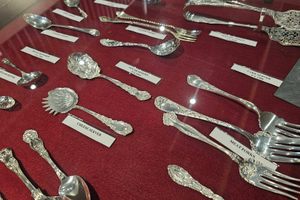About
Built after the 1991 discovery of a T.rex skeleton in the hills outside of this town in Saskatchewan, the T.rex Discovery Centre holds "Scotty," one of the most complete skeletons of this type in the world at 75 percent complete.
The skeleton is almost always being studied in a fossil and paleontological laboratory on site, but a replica is also housed in the museum where visitors can see all of the bones that have been discovered so far.
Admission to the Discovery Centre includes a 30-minute documentary called "The Dinosaur Hunters," which details the discovery and excavation of Scotty in the nearby hills. Guided tours of the building are offered at no extra charge, but visitors are also welcome to wander its halls on their own, where they can learn about the rich fossil history of this area of Saskatchewan.
Another exhibit, "Saskatchewan After the Dinosaurs," contains a full-scale diorama that displays the animals and environments that would have been found in the immediate area about 60 million years ago, right after the expected extinction of the dinosaurs. The exhibit includes a six-foot-long Borealosuchus, or northern crocodile; a five-foot Champsosaurus, or fish-eating reptile; and Ptilodus, a small mammal known as a multituberculate.
“It is an exciting opportunity to introduce the prehistoric world of Saskatchewan,” said Sean Bell, general manager of the T.rex Discovery Centre. “When people think of fossils, they think of dinosaurs. Here in Saskatchewan, we have a lot of really interesting dinosaur material, but we have an even bigger story to tell. Saskatchewan has a great fossil record about the evolution of life in North America after the dinosaurs went extinct. This Palaeocene display will let us portray Saskatchewan from a time that is not necessarily familiar to most people.”
Related Tags
Community Contributors
Added By
Published
February 22, 2011






















